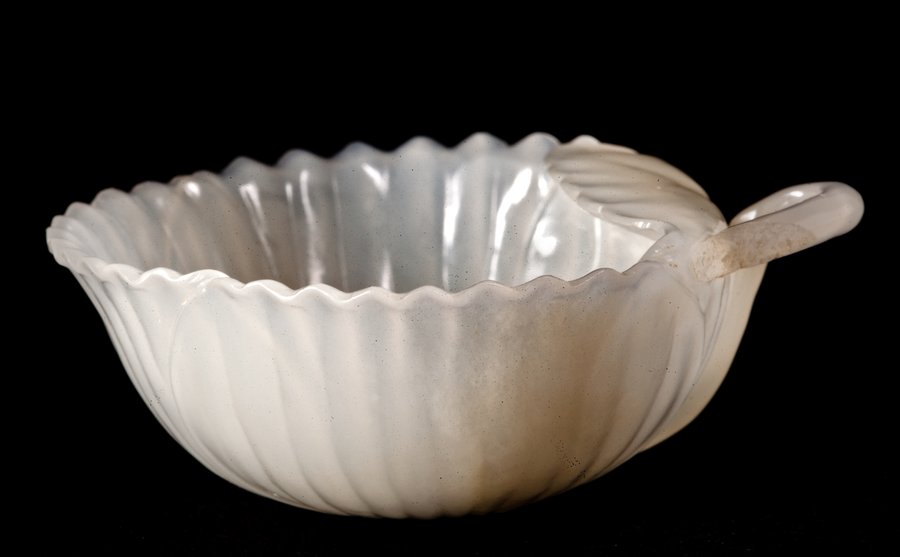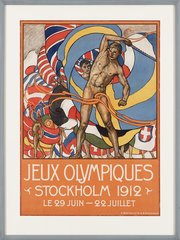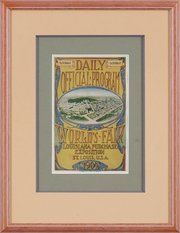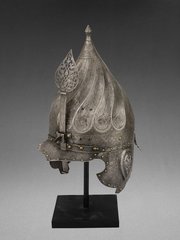
Mughal Jade Cup
Museum of Islamic Art
- Title:
- Mughal Jade Cup
- Production place:
- India
- Date:
- 1730 - 1770
- Period:
- Mughal
- Title:
- Mughal Jade Cup
- Production place:
- India
- Date:
- 1730 - 1770
- Period:
- Mughal
- Material:
- Hardstone
- Technique:
- Carving, Grinding, Polishing
- Dimensions:
- 5.5 × 5.5 × 2.2
This cup is delicately carved from milky-white jade, which would have appeared nearly translucent when held up to the light. Formed in the shape of an uncurling poppy flower, with its petals subtly overlapping over one another and the handle cleverly fashioned from the blossom's stem, this cup showcases the extraordinary skill of Mughal lapidaries. Given the cup's size, shape and association with the poppy flower, it was probably used to serve kawa (a potent blend of wine, spices and opium that was used as an intoxicant, a medicine, or a poison depending on its dosage), a habit that found particular popularity amongst certain members of the Mughal court. This cup joins several other carved jade cups, presumably used for either kawa or wine, produced during the 11th and 12th century AH/17th and 18th centuries CE. The Mughals inherited an appreciation for carved jades from their forefathers, the Timurids, who referred to jade as “hajar al-ghalba (stone of victory)”. With the finest jade stone came from the region of Khotan, in Turkestan (Xinjiang), the Mughals were exceptionally skilled carvers, following in a long tradition of stone carving.



